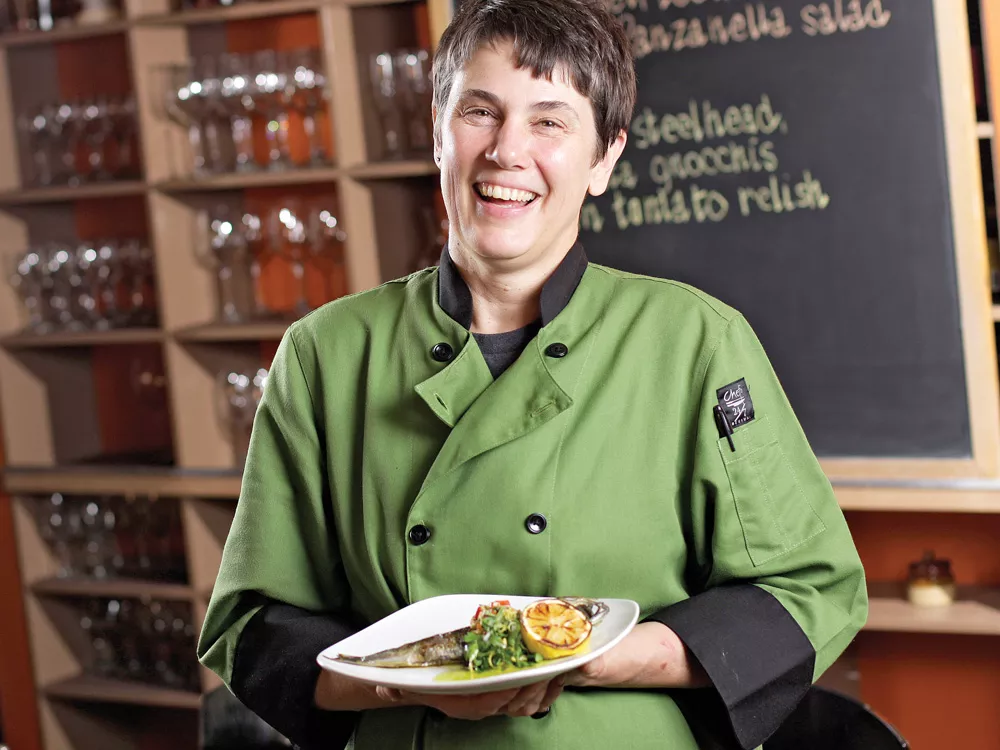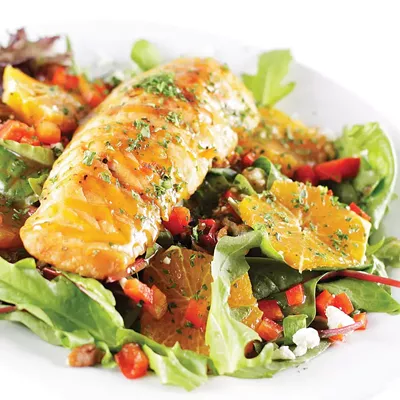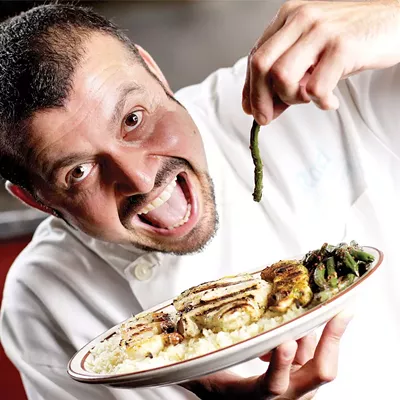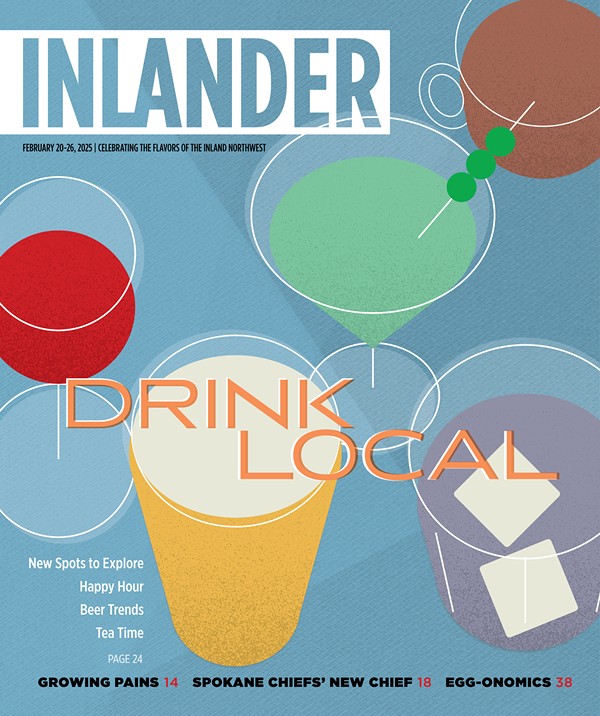After years in the restaurant industry — in this country and others — chef Anna Vogel and her partner Bethe Bowman have their own 50-seat trattoria in Browne’s Addition. Talk to them about it and their eyes light up. They want the Italia Trattoria (144 S. Cannon St.) to be a warm neighborhood bistro that celebrates the breadth of regional cuisines in Italy that can’t be summed up in a can of imported tomato sauce, a pot of linguini and a crust of melted cheese.
Opening their own place has taken almost every waking moment they’ve had since they seriously started looking at lease options this year. It was also a huge risk, given the failure rate of restaurants — even restaurants backed by strong industry experience. Yet finally taking the leap to ownership has also offered them freedom to explore a shared personal vision of what a great restaurant can be.
Vogel and Bowman speak highly of Marcia and William Bond, who they worked with for the last several years at Luna. They also love Tom Douglas and his constellation of successful restaurants in the heart of downtown Seattle. Before moving to Spokane, both of them worked for Douglas for the better part of a decade. But Italia is theirs, and things are simply different when you’re your own boss.
“Anna is able to push the envelope,” Bethe says with a grin, “and people here are hungry for it. They come in open-minded.” In past positions as a chef, Vogel was free to experiment with the food, but she also felt a responsibility to work within the framework of whatever kitchen she inherited. At Italia, there was no framework. All the choices were theirs to make from Day One.
Take the fish, for example. Those that aren’t currently caught or farmed sustainably, however popular, aren’t on the menu. Instead of ahi imported from Indonesian waters or even Northwest salmon of questionable origins, Vogel is featuring several preparations of albacore as well as an Alaskan black cod. The first appears in entrée form on the dinner menu with a green bean salad, crispy matchstick potatoes, orange olive relish, and lemon garlic aioli ($19). The second comes paired with roasted potatoes and chantrelle mushrooms in a corn cream sauce for the same amount.
Vogel has also pushed her suppliers for sardines — an abundant fish plentiful on many menus in Italian that has been almost impossible to get fresh here. Similarly, the chickens and eggs on the menu are certified cage-free, even though this pushes costs up significantly.
If price were no concern, this would be less of a statement. Thomas Keller can afford to source certifiably righteous food at the French Laundry, where the price for a meal for two can top $1,000. Vogel and Bowman are working to purchase ethically and locally while they push to keep prices approachable. Nothing on the current dinner menu is more than $20.
Cost alone means no rabbit at present, even though Vogel loves to cook with it (despite the backlash “bunny effect”). It also means no peppery escarole — one of Vogel’s favorite greens and a classic Italian offering. Seattle is the closest source, and 50 pounds is the minimum order.
Yet none of these tough choices are immediately evident when you pore over Italia’s spectacular lunch, brunch, or dinner menus. What you see instead is a glimpse of regional Italy in all its variety.
As you visit, expect rolling menu changes. Vogel is still featuring heirloom tomatoes because they are still available. Yet when they aren’t locally accessible, they will leave the menu, even as local staples like farro and lentils move to the front.
But don’t think you will be able to predict everything based solely on season. Bowman laughs and says, “Anna is like an Italian mamma. If she loves something, she sneaks it back in.” Like radicchio. “I love it,” Vogel says, “but people around here don’t.”
Still, she is stubborn. It is off the menu for a while, but it will probably be back in some creative form. Already guests are coming back for the octopus that Vogel has been offering, which suggests that just about anything is possible with a bit of passion and the freedom to follow it.
Dining Out 2010
Get a chef to confide in you*, and one of two things will happen. If that chef is passionate about her work but works for someone else, she will undoubtedly talk about the frustrations and constraints of working around customers’ whims — or, maybe worse, an owner’s perception of a customer’s whims. She’ll talk about wanting to be free to make her art on her own terms — to open a restaurant that is only hers, and to make the food she loves making, regardless of who comes in the door.
Now get a chef who is also a restaurant owner to confide in you. She might complain about many things — payroll, a ruined panna cotta, an inexplicable kale shortage — but she won’t complain about feeling boxed in. At worst, she’ll feel misunderstood. But feeling misunderstood is a trait of all artists, isn’t it?
The chefs in Dining Out 2010 belong to that latter category. They have taken on tremendous personal and professional risk in the hope of reaping the tremendous reward of both freedom and success at the thing they love most. Their food and their stories inspire us. We hope they inspire you, too.
— Luke Baumgarten, Section Editor
* This may take a drink or two, and you may have to do some confiding yourself.
















